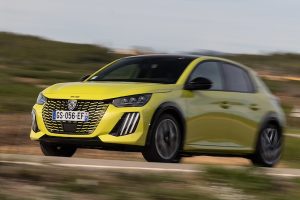
Editorial: Boston needs speed cameras to keep pedestrians safe
No sooner had the Herald reported on a Boston City Council meeting addressing safety measures in the wake of recent pedestrian accidents, than the Boston police put out a bulletin:
“BPD investigators are on scene at Essex St. and Atlantic Ave. where a pedestrian was struck by a truck. The victim has been transported to a local hospital with life threatening injuries. Traffic in the area is impacted. Please seek an alternative route,” the Thursday morning alert read.
This comes on the heels of two pedestrian fatalities over the past week.
Boston, we have a problem.
The council is looking at reducing the city speed limit from 25 to 20 mph to boost safety. Boston lowered its default speed limit from 30 to 25 mph in 2017, but recent fatalities, one involving a child and the other a wheelchair user, are sparking the move to lower speeds even more.
Councilor Ed Flynn, who put in the hearing order on the the 20 mph speed limit, said he thinks the new limit should be even lower, at 15 mph.
This is a great idea — for people who obey speed limits. But for those who floor it when they don’t see a police officer around, it doesn’t do enough. The cost of a speeding ticket should be deterrent enough — a $50 flat fee, a $50 fine and an additional $10 for every mile over the limit.
But you have to be spotted and caught to pay. The Boston Police Department has been dealing with officer shortages, as have law enforcement in cities across the country. How to get eyes on the street to catch lead-footed offenders?
Speed cameras.
There have been recent attempts at legislation to have red light cameras installed at intersections in Massachusetts cities and towns, and all came to naught.
Democratic Reps. Steven Owens, of Watertown, and Manny Cruz, of Salem, had another go in October, filing legislation that would let up to 10 cities and towns in the state install red light cameras.
The cameras would take pictures from the back of the car, it was reported, to prevent racial profiling of drivers. The maximum fine would be $25 per offense.
There’s definitely something there, but the proliferation of pedestrian accidents in Boston calls for more muscle, at least in our city.
Red light cameras are needed, especially in high-traffic areas, and snapping the back of the vehicle only is a good idea. The fine, however, should remain what it is: $100 plus $10 for every mile above the limit.
Getting dinged by a camera and paying a low fine doesn’t drive home the message of how deadly speeding can be, and it won’t necessarily make speed demons ease their foot off the gas.
Getting caught by a camera coupled with a heftier fine sends the signal that Boston means business when it comes to keeping our streets safe. While they’re at it, the ridiculously low fines for jaywalking ($1 for first, second and third offenses, $2 for fourth offense and up) need a hike as well.
“I continue to believe that pedestrian safety is one of the most critical issues we face in the city of Boston,” Flynn said, referencing the city’s goal for Vision Zero, or having zero serious and fatal traffic crashes.
Amen to that.
Editorial cartoon by Steve Kelley (Creators Syndicate)


